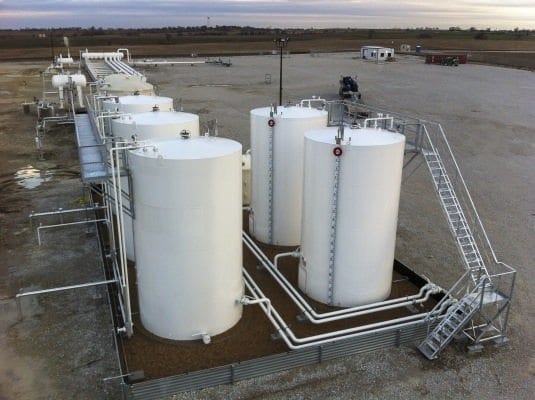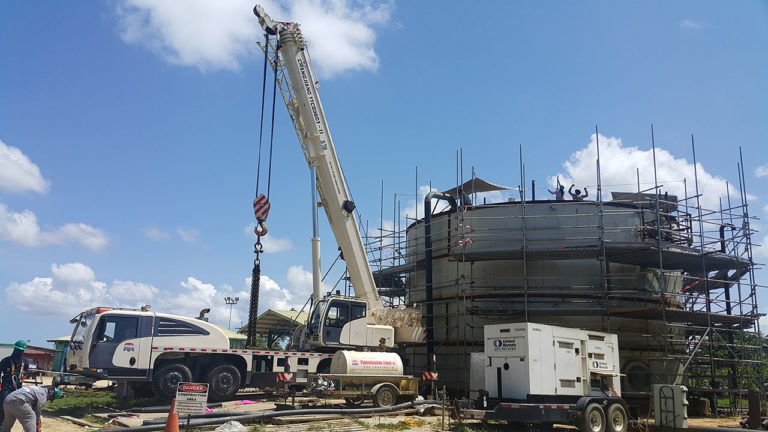How Welding Examination Functions: A Comprehensive Overview for Professionals
Welding assessment plays an essential role in making sure the safety and security and reliability of welded frameworks. It involves a methodical technique that includes both aesthetic inspection and advanced testing approaches. Professionals should acquaint themselves with vital standards and policies governing the market. Comprehending the common issues that can arise during welding is crucial. This overview will discover these aspects carefully, offering understandings into the procedures that support quality and honesty in welding.
Comprehending the Relevance of Welding Assessment
While many may underestimate the value of welding examination, it plays an important role in making certain the integrity and security of bonded structures. Effective welding assessment identifies potential defects and problems that can jeopardize structural stamina and result in disastrous failings. The examination procedure incorporates various methods, such as visual examinations, ultrasonic testing, and radiographic assessments, each adding to the general evaluation of weld top quality.
In addition to securing the structural integrity, welding examination ensures conformity with industry criteria and client specs. By making sure that welds meet needed resistances and characteristics, evaluations aid maintain the dependability and long life of components in various applications, from construction to aerospace. A strenuous evaluation process fosters a society of high quality and liability among welders and manufacturers. Ultimately, welding examination is not just a step-by-step action; it is a crucial method that underpins the safety and security and efficiency of crafted systems across varied markets.
Key Requirements and Laws in Welding Assessment
The foundation of reliable welding examination hinges on adherence to developed standards and guidelines. Different companies, such as the American Welding Culture (AWS) and the American National Specification Institute (ANSI), established forth guidelines that ensure high quality and security in welding techniques. Secret requirements, such as AWS D1.1 for architectural welding and ASME Section IX for stress vessels, provide thorough requirements for welding procedures, certifications, and evaluations. Regulative frameworks, consisting of those from the Occupational Safety And Security and Wellness Management (OSHA), required safety and security techniques and employee securities in welding settings. Conformity with these criteria is crucial for attaining constant weld top quality and lessening the danger of failures. Furthermore, worldwide standards like ISO 3834 additionally boost global uniformity in welding inspection practices. Professionals need to stay notified concerning these laws to ensure that their examination methods straighten with sector assumptions and legal needs, thereby protecting both personnel and architectural honesty.
Initial Prep Work and Visual Inspection Techniques

Reliable welding evaluation starts with a thorough pre-inspection checklist that guarantees all necessary conditions are satisfied prior to the real examination happens. Following this preparation, aesthetic issue identification plays an essential function in evaluating weld top quality, permitting inspectors to spot concerns such as splits or inappropriate combination. Together, these strategies form the foundation for an effective welding evaluation procedure.
Pre-Inspection List
Before beginning any kind of welding examination, a thorough pre-inspection checklist is important to assure that all required prep work are completed which visual assessment techniques are efficiently utilized. Key components of this list consist of confirming the welding treatment specification (WPS), making certain all devices is adjusted and in excellent functioning condition, and verifying that the examiner possesses the needed qualifications. Furthermore, it is vital to assess any kind of previous examination reports and to assess the job atmosphere for security threats. The examiner ought to additionally validate that all relevant documents, such as product certifications and examination records, is readily available. Finishing this checklist aids to develop a strong structure for an effective evaluation process, boosting the reliability of the results gotten.
Aesthetic Defect Recognition
An effective visual problem identification procedure starts with cautious preliminary preparation and the application of well established visual examination techniques. Inspectors must ensure that the welding area is well-lit and tidy, as appropriate exposure is necessary for discovering problems. An extensive assessment of the weld joint's surface permits the identification of suspensions, such as splits, damages, or porosity. Assessors commonly make use of tools like multiplying glasses or mirrors to enhance their view of hard-to-reach areas. Additionally, they ought to recognize with the certain welding criteria and standards relevant to the task. By sticking to these approaches, examiners can successfully recognize possible issues, safeguarding the honesty of the weld and conformity with sector standards.
Non-Destructive Screening Approaches: A Review
Non-destructive screening (NDT) approaches play a crucial role in the welding assessment process by ensuring the stability and integrity of welded structures without creating any kind of damages (API 650 Welding Inspection). These methods allow inspectors to assess the high quality of welds while maintaining the elements being analyzed. Usual NDT methods include ultrasonic screening, radiographic screening, magnetic fragment screening, and dye penetrant testing, each offering special advantages
Ultrasonic screening uses high-frequency acoustic waves to discover inner imperfections, while radiographic screening makes use of X-rays or gamma rays to picture the interior framework of welds. Magnetic fragment testing reveals surface and near-surface problems by using a magnetic field and iron bits to the weld area. Color penetrant screening highlights surface-breaking defects through the application of a colored dye. With each other, these NDT methods provide important understandings into weld high quality, enabling professionals to make enlightened choices regarding safety and security and compliance in welding applications.
Usual Defects and Their Implications
Determining common flaws in welded joints is crucial for keeping structural stability and safety. Various flaws can arise during the welding procedure, each lugging prospective effects for the total performance of the framework. Porosity, characterized by tiny gas pockets within the weld, can deteriorate the joint and compromise its load-bearing capability. Fractures might establish because of thermal anxiety or improper cooling, resulting in potential failure under tension. Insufficient blend takes place when the weld metal does not fully bond with the base material, resulting in weak joints that may not hold up against intended tons. Damaging, where the base metal is worn down, can also minimize the efficient cross-section of the weld. Furthermore, too much reinforcement can develop tension focus that might cause failing. Identifying these issues without delay permits corrective actions, guaranteeing the durability and integrity of bonded structures in critical applications.
Devices and Devices Utilized in Welding Evaluation
Efficient welding additional resources evaluation counts on a range of specialized tools and devices to ensure the top quality and integrity of welded joints. Crucial instruments include aesthetic examination devices, such as amplifying glasses and borescopes, which permit assessors to carefully examine welds for surface area issues. Non-destructive testing (NDT) approaches, such as ultrasonic testing, radiographic testing, and magnetic particle screening, are essential for identifying internal flaws without damaging the product.
Dimension tools, consisting of calipers and weld assesses, help evaluate measurements and determine conformity with specs. Furthermore, hardness testers review the mechanical homes of welded joints. Individual protective tools (PPE) is additionally imperative, safeguarding the security of assessors while functioning in possibly dangerous atmospheres (API 650 Welding Inspection). Each device serves a specific function, collectively enhancing the effectiveness of welding inspection and adding to the dependability of completed projects
Regularly Asked Inquiries
What Certifications Are Required to Become a Welding Examiner?
To come to be a welding examiner, people commonly require appropriate qualifications, such as AWS CWI or CSWIP, together with experience in welding procedures, design concepts, and understanding of examination techniques, safety and security standards, and appropriate codes.
How Usually Should Welding Inspections Be Conducted?
Welding examinations need to be performed on a regular basis, useful link ideally at different job stages, including pre-weld, during-weld, and post-weld. Frequency may additionally rely on market requirements, job specs, and the complexity of the welds involved.
Can Welding Defects Be Repaired After Evaluation?

Yes, welding issues can typically be repaired after examination. Depending on the severity and kind of issue, appropriate methods such as reworking or extra welding may be used to restore structural stability and safety and security compliance.
What Industries Require Normal Welding Evaluations?

Numerous industries, consisting of building, production, aerospace, and vehicle, need normal welding assessments - API 650 Welding Inspection. These inspections assure adherence to security requirements and quality control, minimizing dangers related to structural honesty and functional performance in bonded parts
Exactly how Do I Choose a Welding Inspection Solution?
To pick a welding evaluation service, one should take into consideration find more info certifications, experience, qualifications, and market credibility. Additionally, evaluating consumer evaluations and guaranteeing the service meets pertinent requirements can help ensure top quality inspections and trustworthy outcomes.

While many might ignore the relevance of welding inspection, it plays a crucial role in ensuring the stability and security of bonded frameworks. Secret requirements, such as AWS D1.1 for architectural welding and ASME Section IX for stress vessels, supply detailed requirements for welding treatments, qualifications, and evaluations. Reliable welding evaluation starts with a detailed pre-inspection checklist that guarantees all essential conditions are satisfied prior to the actual inspection takes place. Before commencing any kind of welding evaluation, a detailed pre-inspection list is necessary to ensure that all required preparations are completed and that aesthetic inspection methods are effectively employed. Non-destructive testing (NDT) methods play a necessary function in the welding assessment procedure by making certain the integrity and dependability of welded structures without causing any kind of damage.